By Ana Ibáñez García, Asunción Martínez, Ana Sánchez Reche
The plastic industry evolved dramatically during the XX century, especially in the fifties. From its beginning, plastic has been used in the toy manufacturing industry due to several factors: acceptable cost, ease of moulding, possibility of producing complex forms, etc.
At the end of the XX century, petrol prices decreased parallel to the interest in biodegradable plastics. Over the last years this tendency has been inverted. There is a factor of combinations that push for the increasing interest and acceptation of biodegradable resins, at a time of increasing petrol prices and a higher consciousness of how the oil reserves are being drastically reduced. Thus, there is a global awareness now, especially in the European Union, on the need to reduce environmental problems generated by industrial processes. Commonly these requirements are attached to legal measures and environmental policy, which is why there are collective efforts to get the balance between development and ecology. Among other aspects, new formulations with biodegradable materials which are more respectful to the environment are progressively being researched.
This research in biodegradable materials is allowing new applications development. Currently, the most common market for bioplastics is packaging. The applications are commercial bags made of biodegradable plastics, bags and compostable waste collection and compostable food trays and food packaging or made from biomass. Applications in other sectors such as the automotive or electronics ones are being developed.
In the toy sector, other materials such as wood, textiles and metal are being employed. Nevertheless, the main component used in toys is plastic, such as polyolefins (polyethylene, polypropylene, EVA, etc.), styrene derived polymers (PS, ABS, SB, etc.) and plasticized PVC being the most used plastics in the toy sector. Certain components or toy pieces (figure 1) use technical plastics (like polyamide, polycarbonate or polymethyl methacrylate). These, moreover, have a short useful life and are thrown away shortly afterwards, as it is not possible to re-use almost any of their components.

Figure 1. Plastic Materials used in the toy sector (percentage).
The toy sector, with 97% of it being made up by SME’s, is conscious of the product innovation and process improvement requirements. Thus, the sector bet for the use of this type of material which offers higher biodegradable characteristics.
In this context, the Technological Institute for Toys (AIJU) is developing the BIOTOY project to research biodegradable materials to use in the Toy sector.
BIODEGRADABLE POLYMERS
A biodegradable material is defined as a polymer able to break down in carbon dioxide, methane, water, inorganic constituents or biomass through the enzymatic action of micro organisms. Biodegradable materials can be classified into four main categories regarding their origin and production (Table 1):
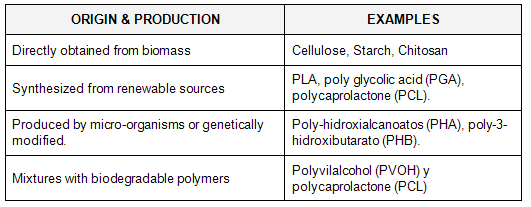
Table 1. Biodegradable Materials Classification
AIJU is developing this project for the development and validation of different plastic materials with biodegradable characteristics both for commercial and non-commercial purposes, to determine their possible use in the toy and childcare articles sector. Its objective is to offer the sector a wide range of materials, appropriate for the designing and manufacturing of new and different products, with biodegradable properties, which are still not on the market.
The Biotoys project basically consists of, on the one hand, compiling commercial biodegradable materials and, on the other, undertaking the study of their mechanical and physical characterization.
MATERIALS USED
The most common processing technique in the toy industry (table 2) is the injection process. That is why the selected materials for this project are high fluidity materials, appropriate for the injection process.
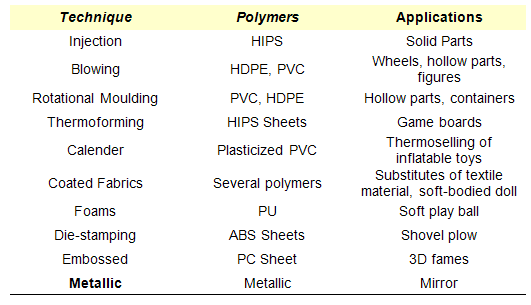
Table 2. Processing techniques in the toy industry
Taking into account these required characteristics and properties, in the first phase relating to “Search and selection of materials with biodegradable features” the following materials were selected:
- Natural starch based polymers. MaterBi YI01U.
- Biodegradable polyester. PHB P 226 (polyhydroxybutyrate PHB)
- Polyvinilalcohol
- Thermoplastic compounds with sawdust and almond shells
- Biopolymer compounds with almond shells. PHB+35% Almond Shells
- Additives to provoke the thermoplastics oxodegradation.
ADDIFLEX HES INJECTION TESTING
Before undertaking the actual injection, the filling, compactation and cooling phases of the injection process were simulated with the different biodegradable materials used (figure 2). The analysis showed that the selected materials did not present processing problems.
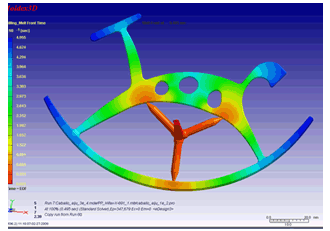
Figure 2. Simulation of the filling process with PHB P226
Previous injection tests with the selected materials had been done, using a test-tube. Some pieces were also injected with a demonstrative mould (Figure 3).
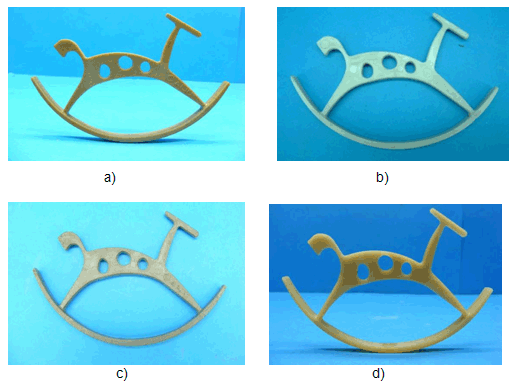
Figure 3. Some examples of injected pieces with the demonstrative mould using different materials:
a) ARBORFORM, b) PHB, c) PHB+35%Almond Shell, d) STARCH
For the production of standard samples to carry out the tensile, flexural and impact tests as well as the pieces obtained from the prototype mould n DEMAG Ergotech 110-430h/310V injection machine was used.
Special attention was paid to the injection parameters regarding time and process temperature as these materials can be affected by other factors. The temperature for the injection process was between 140-190ºC.
DISCUSSION AND RESULTS
Shore hardness, flow rate, density and Vicat softening temperature of the different materials were characterized. The obtained results are included in table 3:
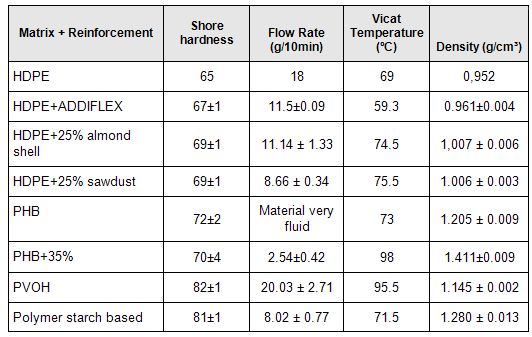
Table 3.Physical properties of the different materials.
The results of the tensile, flexural and impact tests for an injected test-tube with the different materials are shown in the following figures 4, 5 & 6.
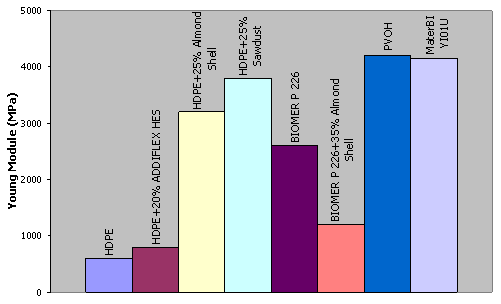
Figure 4. Young Module variation of the different materials with biodegradable characteristics.
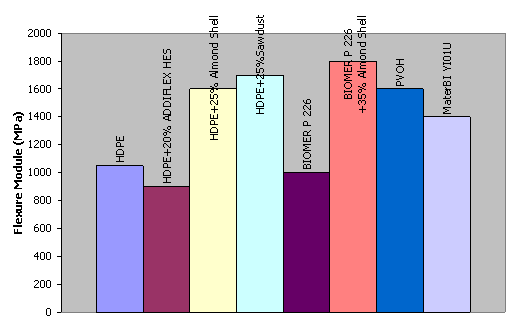
Figure 5. Flexure Module variation of the different materials with biodegradable characteristics.
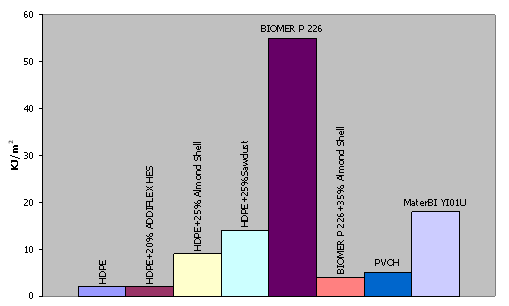
Figure 6. Variation of energy absorbed by different materials with biodegradable characteristics.
From the results obtained, it can be observed that each material has different physical and mechanical properties, but all of them are usable in the injection process, with them being used for different types of toy items.
Regarding the appearance, the HDPE injected pieces with almond shell and sawdust have a similar look to wood. The addition of a 20% of an oxodegradable additive to the HDPE browns the material.
Injected pieces with PVOH are very flexible while the starch based ones are fragile.
Nevertheless all of them have a similarity: the injected test-tube has a substantive smell. This smell could be reduced by the incorporation of an additive.
NEXT STEPS
Step by step bioplastics will find their place in the toy industry world and in AIJU we want to support the use of such materials. The next activities in the project of biodegradable materials study will be focused on the improvement of the impact properties. The formulations will be optimized and improved with the object of being incorporated into specific products.
ACKNOWLEDGEMENT
The activities developed in the present work have been funded by the IMPIVA (Valencia SME Institute)
The views, opinions and technical analyses presented here are those of the author or advertiser, and are not necessarily those of ULProspector.com or UL Solutions. The appearance of this content in the UL Prospector Knowledge Center does not constitute an endorsement by UL Solutions or its affiliates.
All content is subject to copyright and may not be reproduced without prior authorization from UL Solutions or the content author.
The content has been made available for informational and educational purposes only. While the editors of this site may verify the accuracy of its content from time to time, we assume no responsibility for errors made by the author, editorial staff or any other contributor.
UL Solutions does not make any representations or warranties with respect to the accuracy, applicability, fitness or completeness of the content. UL Solutions does not warrant the performance, effectiveness or applicability of sites listed or linked to in any content.


